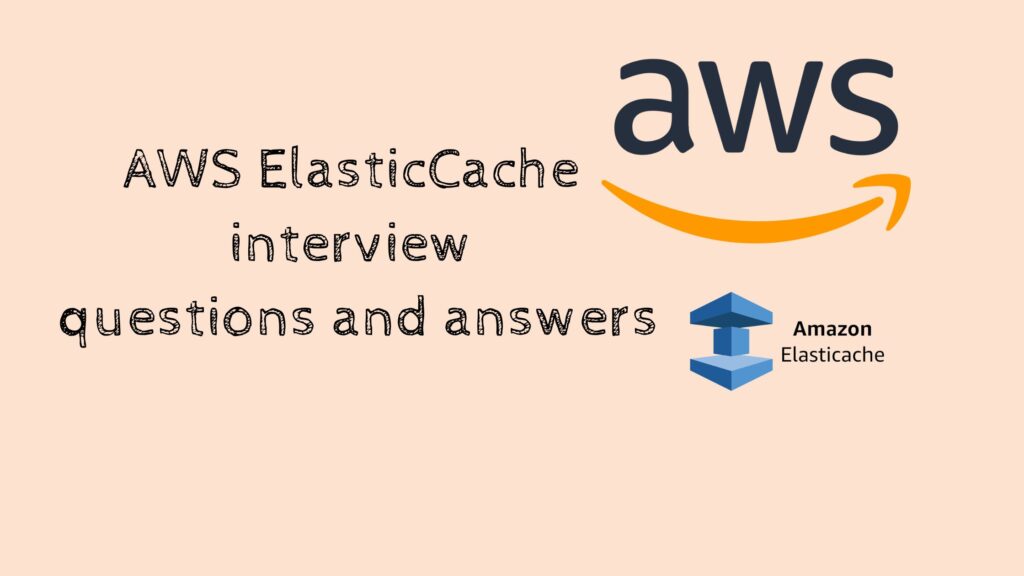Get ready for your AWS ElastiCache interview with these top 10 questions and answers. Covering topics such as primary use cases, cache engines, data durability, integration with other AWS services, scaling, monitoring, and pricing, these questions and answers will help you demonstrate your knowledge and understanding of this in-memory data store and cache service.
What is AWS ElastiCache and what are its primary use cases?
AWS ElastiCache is a fully managed in-memory data store and cache service that makes it easy to deploy, operate, and scale an in-memory cache in the cloud. It can be used to improve the performance of web applications by allowing them to retrieve data from a fast, in-memory cache rather than relying on slower disk-based databases.
What are the different cache engines supported by AWS ElastiCache?
AWS ElastiCache supports two open-source in-memory cache engines: Memcached and Redis.
How does AWS ElastiCache differ from Amazon RDS and Amazon DynamoDB?
Amazon RDS (Relational Database Service) is a managed database service that makes it easy to set up, operate, and scale a relational database. DynamoDB is a fully managed NoSQL database service. Both RDS and DynamoDB are disk-based, while ElastiCache is an in-memory cache. This means that ElastiCache is generally faster than RDS or DynamoDB, but it is not a persistent data store like RDS or DynamoDB.
How does AWS ElastiCache ensure data durability?
AWS ElastiCache stores data in memory, which means that data is lost when the cache cluster is restarted or terminated. To ensure data durability, ElastiCache can be configured to automatically create snapshots of the cache cluster and store them in Amazon S3.
Can I use AWS ElastiCache with other AWS services?
Yes, AWS ElastiCache can be used with a variety of other AWS services. For example, it can be used with Amazon EC2 to create a cache cluster that is closely integrated with a web application, or it can be used with Amazon S3 to cache frequently accessed data that is stored in S3.
Can I scale an AWS ElastiCache cluster up or down as needed?
Yes, AWS ElastiCache makes it easy to scale a cache cluster up or down as needed. You can use the AWS Management Console, the AWS ElastiCache API, or the AWS CLI to add or remove cache nodes from a cluster.
How do I monitor an AWS ElastiCache cluster?
AWS ElastiCache provides a number of ways to monitor cache clusters. You can use CloudWatch to view metrics for cache clusters, and you can use CloudWatch Alarms to be notified when certain thresholds are breached. You can also use the AWS ElastiCache API or the AWS CLI to get real-time statistics about cache cluster performance.
Can I use AWS ElastiCache with non-AWS applications?
Yes, AWS ElastiCache can be used with non-AWS applications. You can connect to an ElastiCache cluster from any application that is able to communicate with a cache engine over a network connection.
How much does AWS ElastiCache cost?
AWS ElastiCache pricing is based on the cache engine and cache node type that you choose, as well as the number of cache nodes and the duration of cache node usage. You can view the latest ElastiCache pricing on the AWS website.
Can I try AWS ElastiCache for free?
Yes, AWS offers a free tier for ElastiCache that includes 750 hours per month of cache.node usage with a cache.t2.micro node type. This free tier is available for 12 months after you create an AWS account. Please note that other charges, such as the cost of Amazon S3 snapshots and data transfer fees, may apply even if you are within the free tier. You can view the latest ElastiCache free tier details on the AWS website.


